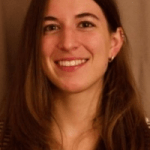Life-Polyfarming proposes a completely sustainable agri-food model change
Polyfarming is a regenerative agriculture project that combines forest resources, livestock and crops to recover a fertile soil in Mediterranean mountain areas. The project, co-financed by the European Commission's LIFE program, is led by the CREAF and the Planeses farm, where it is carried out on a real scale.

Mediterranean mountain areas have been facing abandonment of agriculture and livestock for years. One of the reasons is the low fertility of the soil related to the overexploitation of livestock and agriculture over the years, in addition to the climatic conditions in these places. The abandonment of these activities causes problems at a socioeconomic level, since the capacity to produce crops and livestock is reduced, inequalities may arise between territories. It also has a great environmental impact: the soil degrades faster, the biodiversity of insects and microorganisms decreases and the ability to store atmospheric carbon is lost. In this context, LIFE Polyfarming aims to demonstrate that by combining the resources offered by the forest, crops and animals, we can consolidate a fertile and profitable soil in a long term in a sustainable way.
LIFE Polyfarming aims to demonstrate that by combining the resources offered by the forest, crops and animals, we can consolidate a fertile and profitable soil in a long term in a sustainable way.
The project is performed in Planeses, a farm located at La Garrotxa. The farm is surrounded by forest, it has meadow plots where chickens, rabbits and cows graze, it also has an orchard and a vegetable patch. There, the agro-silvo-pastoral management proposed by Polyfarming is carried out every day.
The forest is an essential resource for all farm activities
One of the products obtained from the cuts of branches or trunks of the forest is the biochar. This charcoal is used in the garden and in the grass to improve the physical properties of the soil, since it allows to absorb more water and nutrients. In addition, it is a refuge for microorganisms and it is able to absorb sudden changes in temperature. Before using it, it is added to the chicks' bed to enrich it with nutrients and microorganisms.

The smaller branches of the trees are used to make another product, the BRF, a compost of high nutritional content that favors the proliferation of fungi and bacteria beneficial to the soil. To make BRF, the branches are crushed and are left in the forest a few months until they are decomposed.
These techniques, in addition to improving soil fertility, are a great opportunity to mitigate the climate change.
Another technique used is crops on a bed of trunks “Hügelkultur”. The method is to bury logs under the ground, so they act as a sponge that retains water and microorganisms. Wooden beds are especially useful in areas where there is a shortage of water.
These techniques, in addition to improving soil fertility, are a great opportunity to mitigate the climate change, both to sequester the large amount of atmospheric carbon that trees contain, and to use better the water in a drought situation that it will be increasingly frequent.
Livestock, a key piece to enrich the soil
The management of the livestock of cows, chickens and rabbits also helps to restore the soil fertility. In Planeses, we manage the livestock through the “Programmed intensive herding", with this technique the animals graze each day on a different plot and take around 50-60 days to return to a plot where they have already eaten. In this way, they do not damage the regrowths of the first plants that they ate, but they do improve the fertility and biodiversity of the soil with their excrements.

Polyfarming proposes a self-sufficient vegetable garden
"This change of model claims food sovereignty, helps to mitigate climate change and recovers agro-silvo-pastoral activity in Mediterranean mountain areas”, reflects Marc Gràcia Moya.
The land of the garden is not worked so the soil structure is not broken and, thus, it prevents the decrease of biodiversity and nutrients. Its maintenance consists, on the one hand, in an irrigation system that provides water and biofertilizers and, on the other hand, in spreading biochar and BRF to improve the chemical and physical properties of the soil. Small animals are another essential tool for management: they eliminate insects, fertilize the earth and eat weeds.

“The Polyfarming system is an alternative to the current agriculture and livestock system. This change of model claims food sovereignty, helps to mitigate climate change and recovers agro-silvo-pastoral activity in Mediterranean mountain areas”, reflects Marc Gràcia Moya, a researcher at CREAF and the scientific coordinator of the project in Planeses.
Planeses is open to anyone interested to make a visit and offers courses that explain in detail the Polyfarming system. In addition, you can already subscribe to its newsletter!







